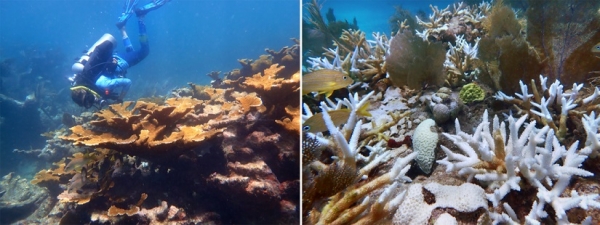In the summer of 2023, portions of the Florida Keys experienced an extreme marine heat wave, unlike any other in recorded history for the region.
In the summer of 2023, portions of the Florida Keys experienced an extreme marine heat wave, unlike any other in recorded history for the region. Heat records were broken and some reefs were completely bleached—they expelled their food-producing algal partners and turned white.
Throughout this prolonged heat wave NOAA scientists and partners raced to rescue vulnerable coral species, fearing mass mortality. Thousands of nursery coral colonies were relocated to climate-controlled labs, some were temporarily moved into deeper, cooler water, and small-scale shading experiments were conducted. In addition, live gene banking was also employed to preserve unique genetic individuals of threatened coral species.
The extreme ocean heat returned to more tolerable levels in the fall, although it was still above average. Previously relocated corals were returned to their original in-water nurseries across the Florida Keys. In February, NOAA’s Mission: Iconic Reefs program and their partners surveyed restored corals—which are nursery raised and outplanted on a reef—throughout the Florida Keys to better understand the impacts of the record-high ocean temperatures from the summer of 2023. The initial findings of this mission were pretty grim for some coral species.
Read More: NOAA
(left) Healthy elkhorn coral at Horseshoe Reef in the upper Florida Keys before last summer’s mass bleaching event. (right) Bleached wild and outplanted staghorn and brain corals at Sombrero Key Reef in the middle Florida Keys in the summer of 2023. (Photo Credit: Ananda Ellis/NOAA)




